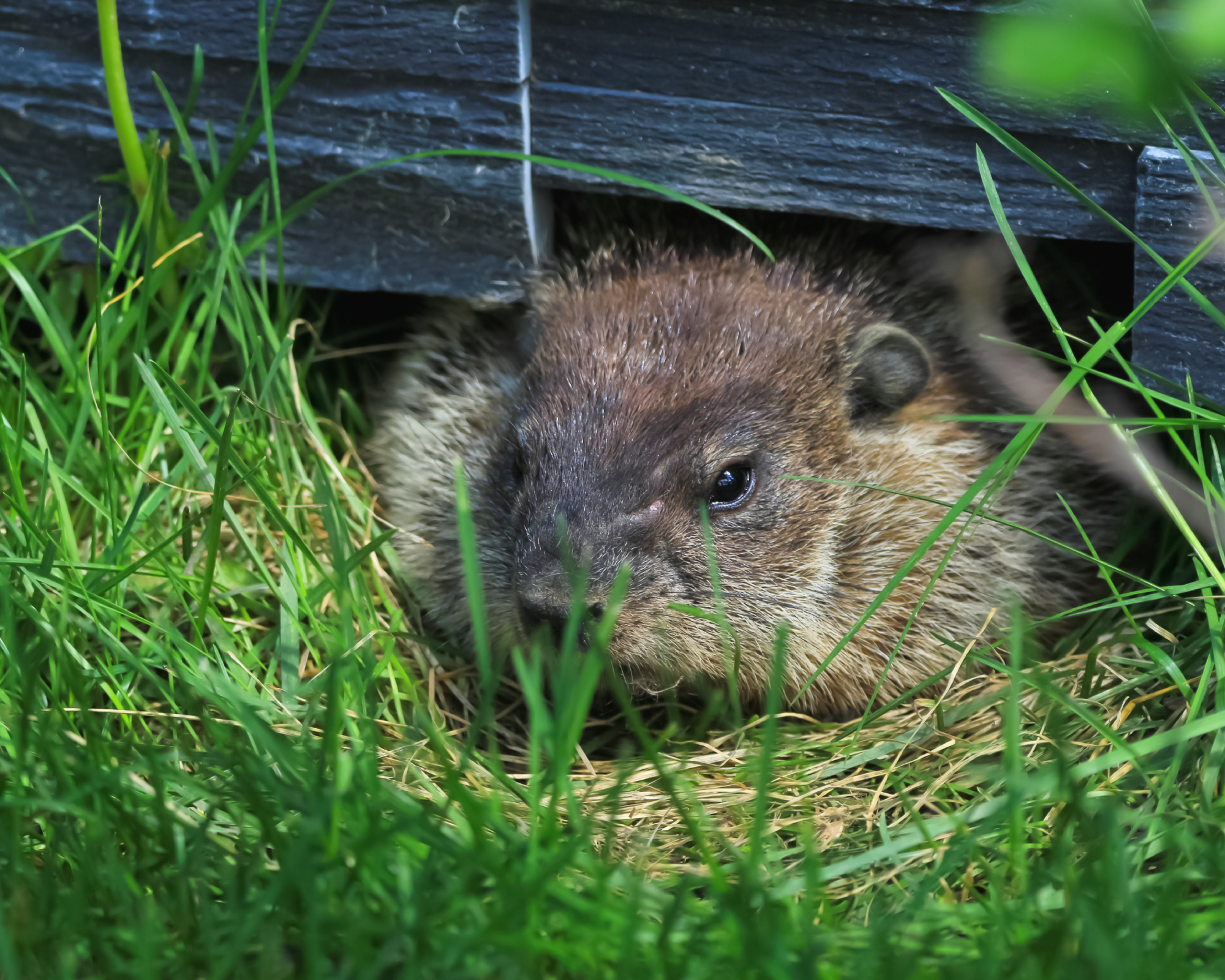Try These 6 Clever and Humane Ways to Keep Groundhogs Out of Your Garden Without Harming Them
Groundhogs wreak havoc on vegetable gardens and flower beds, but you don't have to give in to the burrowing burglars. Explore kind ways to move them along.


Hey there, garden guardians! Groundhogs, which can also be called woodchucks and whistle pigs, are those burrowing burglars with a taste for greens. They’re drawn to yards with tasty plants or nice cozy spots to dig. They can pop up in anyone’s backyard, lured by the clover and soft soil. They’re not evil, though. They’re just looking for food and a home.
Unfortunately, their tunneling can topple fences, and their appetite for beans or peas can leave you empty-handed come harvest time. It’s a battle worth fighting and humane methods of control can be used to keep groundhogs out of the garden.
When summer in full swing and groundhogs more active, now’s the time to act. If you’re scratching your head on how to handle them, there are quite a few ways to get rid of groundhogs without harming them. Let’s dive into spotting and shooing them away the kind way!
What Attracts Groundhogs to Your Yard?

Groundhogs are those stout, brownish critters you might spot waddling through your yard. They are considered part of the marmot family with a knack for digging deep burrows. They’re about 18-24 inches (46-61cm) long, including that bushy tail. Groundhogs love to eat many things that you grow in your garden. They can be found munching on fresh greens like lettuce or carrots. (I’ve had to replant these veggies frequently after their visits.)
What draws them in is easy access to food, especially if you’ve got a vegetable garden patch or fruit trees. Soft soil makes for easy digging when they tunnel to set up a home in your yard. I noticed mine showed up when I let the grass grow long near my garden, giving them cover and a snack bar. They’re also fans of shaded spots under decks, which I learned the hard way after finding a hole there last spring.
How to Tell If You Have a Groundhog in Your Garden

Spotting a groundhog isn’t always obvious, but there are telltale signs if you know where to look. I first noticed chewed stems on my pea plants, left ragged like a bad haircut, which clued me in. Those burrows are a dead giveaway. You’ll look for 10-12 (25-61) inch wide holes with piled dirt nearby, often near fences or sheds, where I found one last month.
You might also see their tracks, with five toes and claw marks, or catch a whiff of their musky smell if they’re close. They also have a loud warning whistle which startles you a little if you aren’t ready for it. Keep an eye out, especially at dawn or dusk when they’re busiest.
Sign up for the Gardening Know How newsletter today and receive a free copy of our e-book "How to Grow Delicious Tomatoes".
Humane Ways to Deter Groundhogs
If groundhogs have been tearing through your garden, you know how maddening it is. Those little troublemakers can demolish your veggies like they’re at an endless feast. I’ve had it happen a few times myself, more times than I’d like to admit.
But there is no need to stress. I’ve found that there are some simple, kind ways to encourage them to move along, and I’m happy to share what’s worked for me. Let’s learn how to protect that plot!
1. Build a Fence They Can't Climb

One trick I would recommend is putting up a fence to keep them out. This is humane and effective if done right. Use chicken wire, like I purchased from Amazon, or hardware cloth, and bury it 12 inches (about 30cm) deep and bend the top outward at a 90-degree angle to stop their climbing.
Set up a fence around your veggie patch, or wherever else you have an issue with them. It’s a bit of work, but it’s a solid barrier that lets you garden in peace.
2. Sprinkle Spicy Deterrents

Groundhogs hate spicy stuff, so you should have some luck scattering cayenne pepper as a pest repellent. You can also spray a DIY garlic pest repellent around the plants to keep groundhogs away. I mix a handful of garlic powder with water, spray it on, and reapply after rain. It works like a charm to make my garden less tasty. It’s cheap and easy, though you’ll need to refresh it pretty often. You can also try a repellent like Bonide Repels-All from Amazon or your local garden center.
3. Use Motion-Activated Sprinklers

A motion-activated sprinkler is another level of humane groundhog defense. I love the sprinkler that I purchased from Amazon. It spooks them with a sudden burst of water, and it catches groundhogs off guard, sending them running. It’s humane, keeps the soil moist, and you’ll notice it making a difference. Just adjust the sensitivity so it doesn’t soak you too!
4. Plant Repellent Companions

Planting things groundhogs dislike can also help to deter them. Planting marigolds or oregano around your garden edges can push them away. Just tuck some marigolds along the fence line, and their strong scent will repel groundhogs. It doubles as a pretty border, but it’s not a full shield, so pair it with other tricks.
5. Create a Distraction Garden

You can set up a little 'decoy' patch to draw groundhogs away from your main garden. Groundhogs love to eat clover, alfalfa, and dandelions. This distraction garden will entice groundhogs to go munch there instead or your veggie garden or flower beds.
It’s a simple move. Plant your decoy garden 20-30 feet (6-9m) away from the garden your are protecting and it will help to keep them busy while your tomatoes thrive. It needs regular weeding, but it’s a gentle way to redirect them.
6. Play Natural Sounds

Last summer, I tried playing a radio with nature sounds near my garden, and it threw off the groundhogs' routine. Groundhogs prefer quiet, so the chatter of birds or rustling leaves from a speaker kept them at bay. I set it on low at dusk, and it’s been a quirky but effective deterrent. Just swap stations if it gets old!
Final Thoughts

Keeping groundhogs out doesn’t have to mean harsh traps. You can do this without harming them. These humane hacks have saved my garden and let those critters live their lives elsewhere. You might even enjoy tweaking fences and sprinklers, and your plants will be happier for it.
Why not try a couple of these groundhog repelling tricks and share your favorites with a gardening buddy? It’s all about finding what clicks for your yard!

Tyler’s passion began with indoor gardening and deepened as he studied plant-fungi interactions in controlled settings. With a microbiology background focused on fungi, he’s spent over a decade solving tough and intricate gardening problems. After spinal injuries and brain surgery, Tyler’s approach to gardening changed. It became less about the hobby and more about recovery and adapting to physical limits. His growing success shows that disability doesn’t have to stop you from your goals.